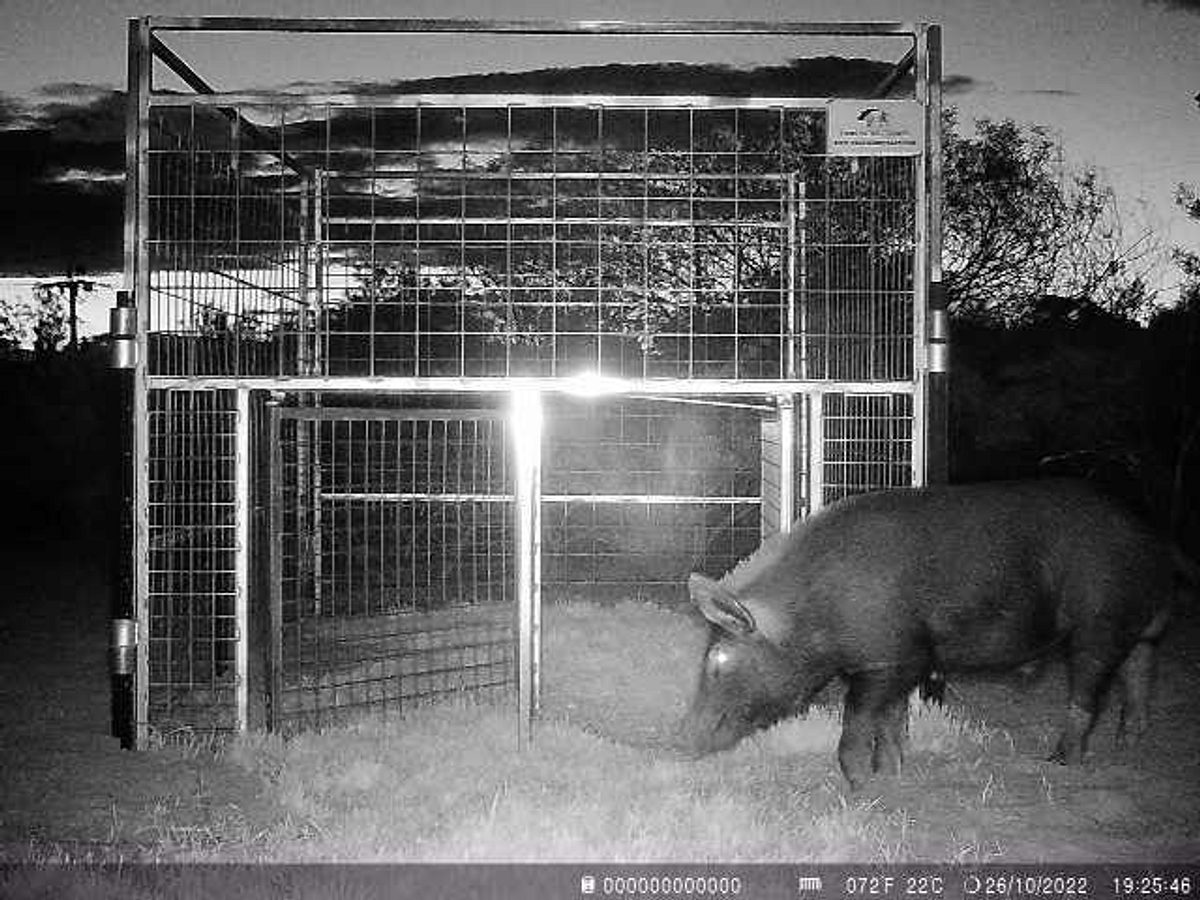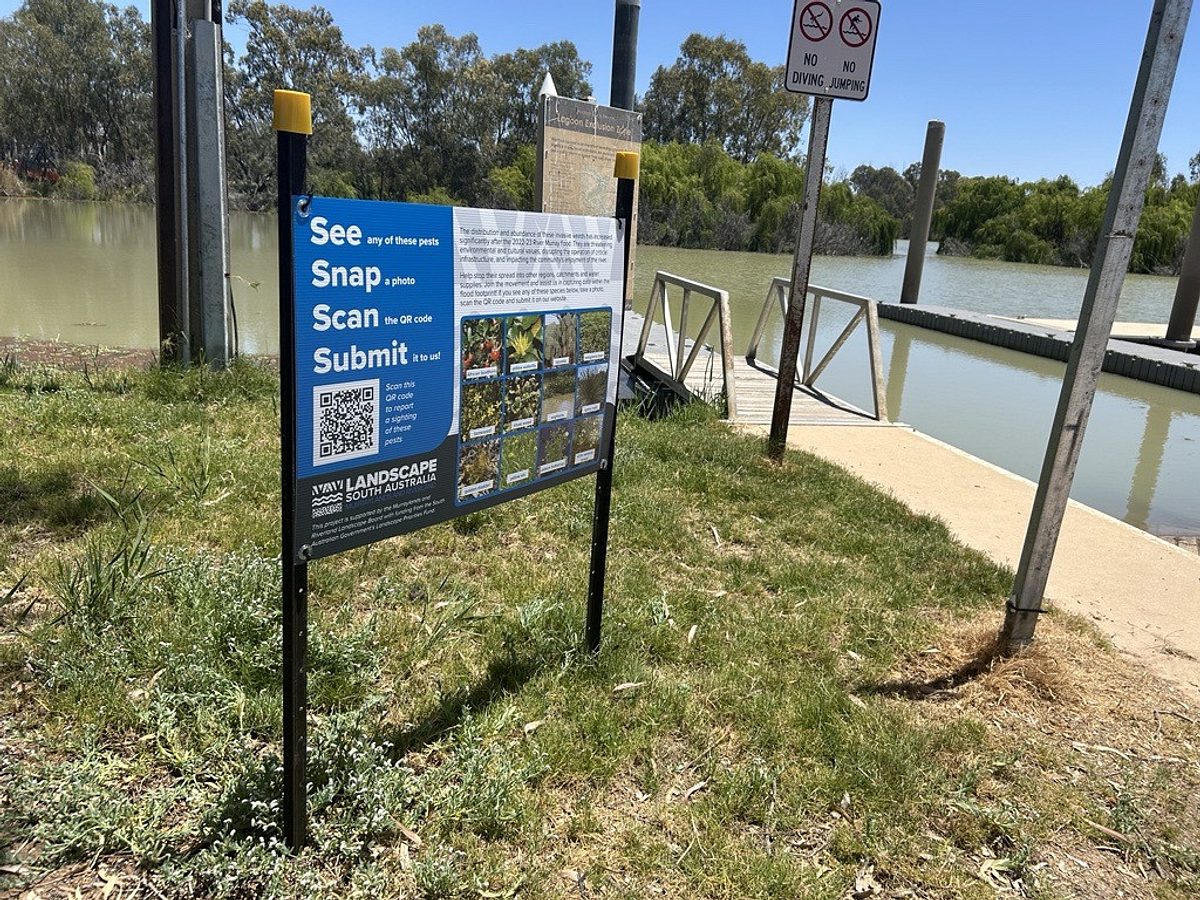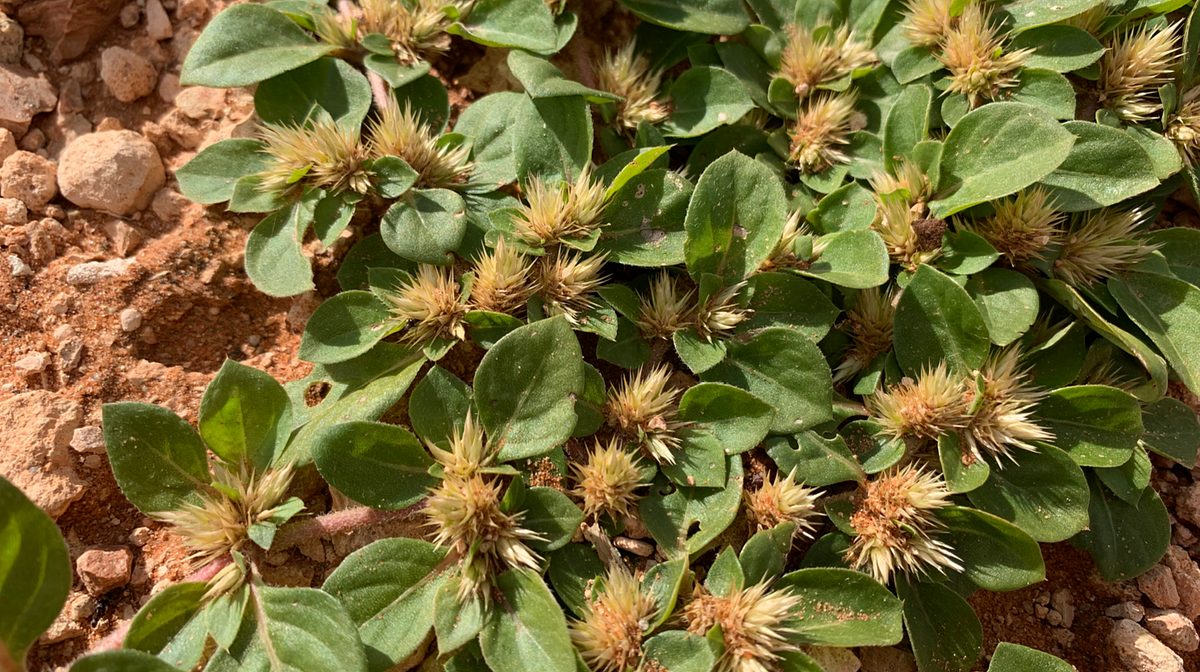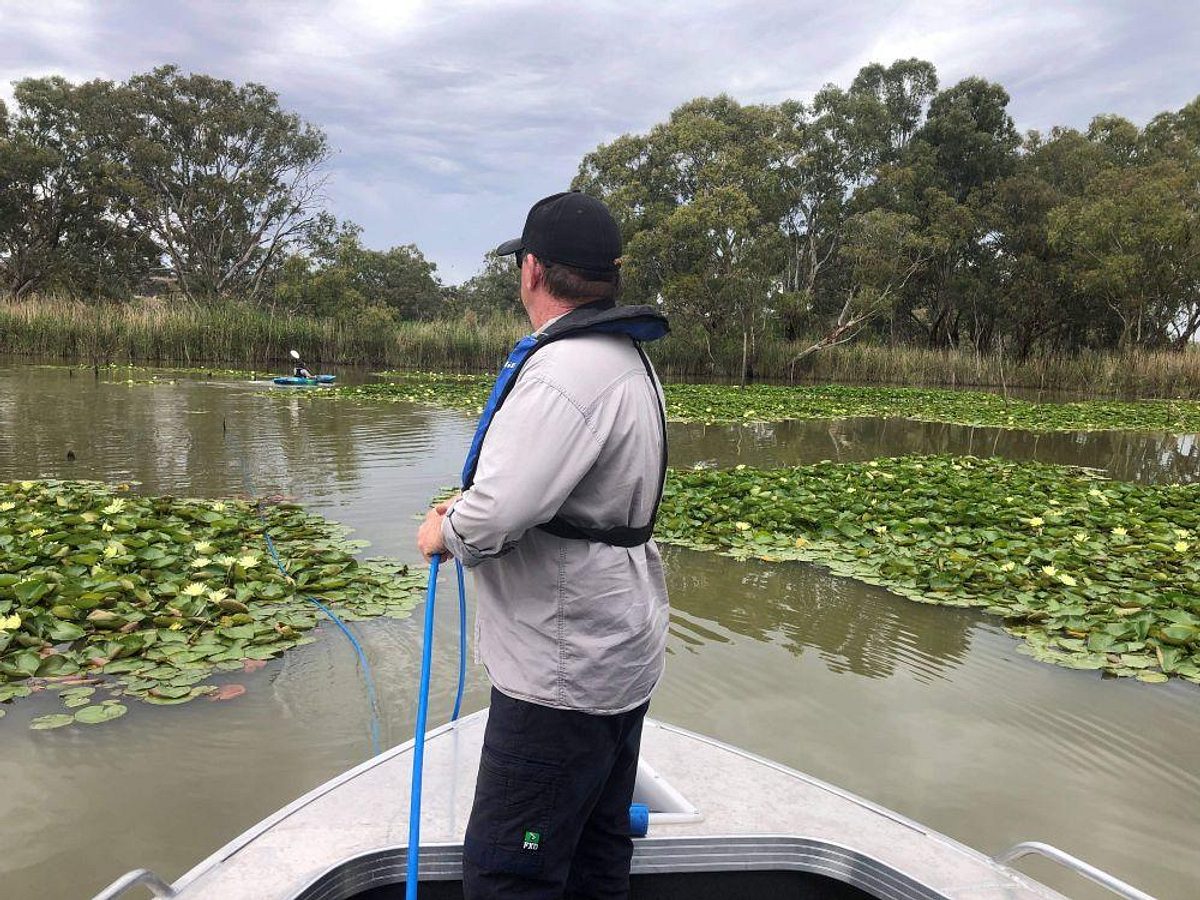Two-Pronged Approach to Feral Pig Management Produces Encouraging Results
Remote monitoring traps and baits has helped the landscape board to implement a successful new approach to manage feral pigs in the Riverland.
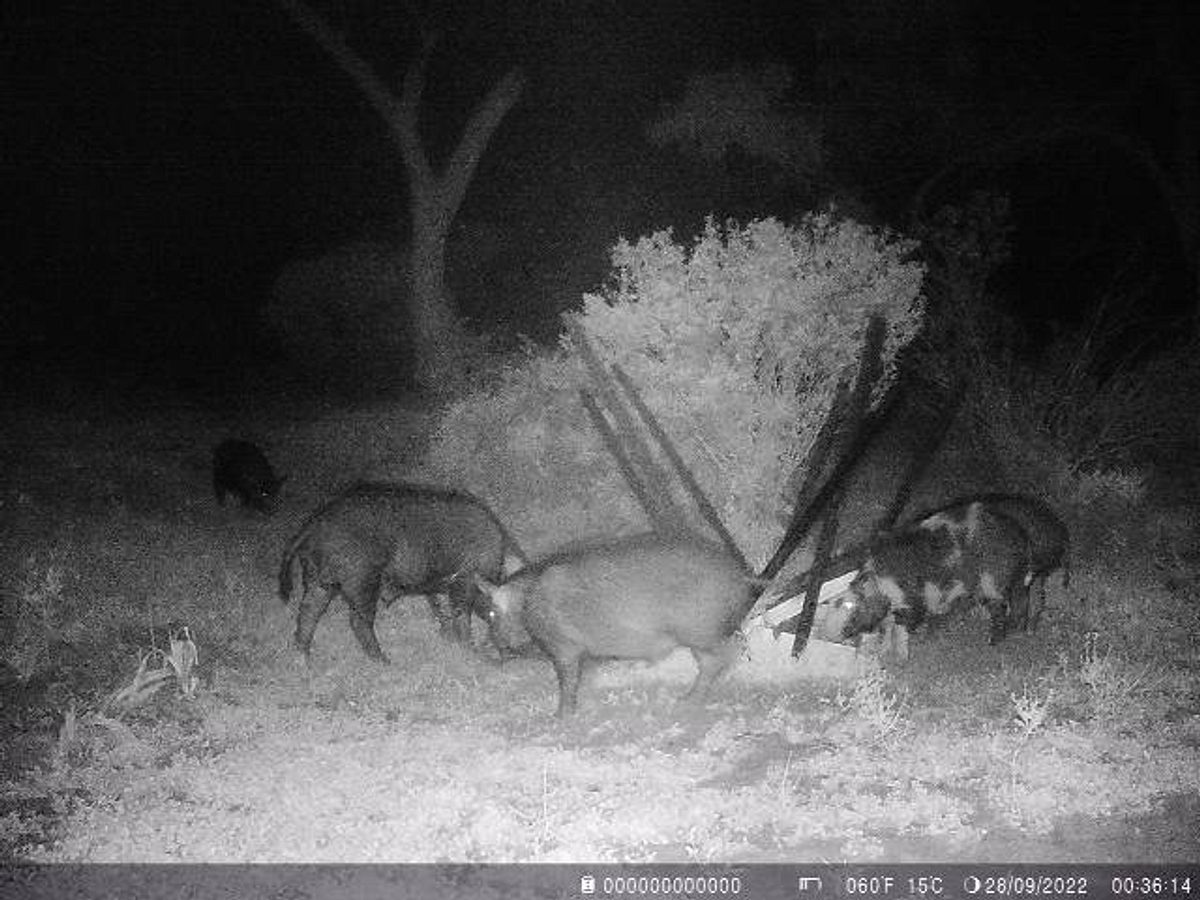
A new project to tackle the Riverland’s feral pig population has removed more than 20 pigs from the landscape in the first 2 months.
Based on several private properties in the northern part of the Riverland, a combination of baiting and trapping has been used to target feral pigs, which create untold damage to native ecosystems and productive farmland.
Cameras set up to monitor trap sites transmit images back to the phone of Brenten Miller, the Murraylands and Riverland Landscape Board district field officer overseeing the project, and the landholder.
“The cameras are motion activated so we’re notified every time a pig enters the trap,” said Mr Miller. “In the case of the bait stations, the images allow us to monitor the habits of feral pigs – often we can see them coming back four or five nights in a row to eat, which is when we can be confident that putting out baits is likely to be effective.”
The trial, which was launched in September this year, has removed 21 feral pigs from the landscape so far – 13 via trapping and 8 via baiting.
Mr Miller said that controlling the feral pig population would help to protect valuable farming land and sensitive native ecosystems.
“A few pigs can cause massive amount of damage. It’s not uncommon for a few pigs to churn up to 70 or 80 square meters of soil overnight”, said Mr Miller.
“Damage also includes crop and pasture losses and the destruction of agricultural infrastructure. Feral pigs also pose a threat to new born lambs and native wildlife, and they spread weeds and foul backwaters and wetlands” he said.
In addition to reducing the damage feral pigs cause to the landscape, this project is also timely in terms of protecting biosecurity and agricultural productivity.
“Pigs are also carriers of foot and mouth disease and swine flu. Neither are currently known to exist in Australia, but Japanese encephalitis is, so reducing feral pig numbers helps to further safeguard livestock industries.”
Landholders experiencing issues with feral pigs, are encouraged to contact the Landscape Board for advice on control methods.
